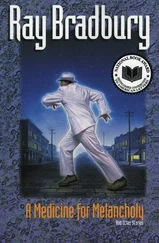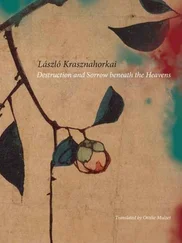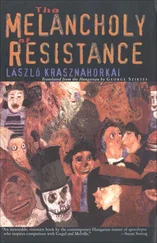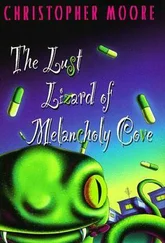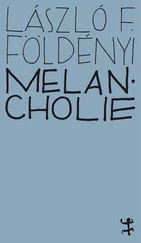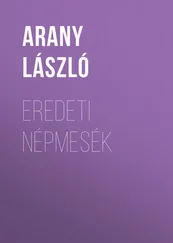Technically minded medicine aims to eradicate all contradictions, and although efforts to cure result in insoluble problems every day for physicians and patients alike, strictly somatic medical science puts this down to an insufficiency of the conceptual and technical apparatus, not noticing that in practice insoluble cases are often due to the ultimate insolubility of human existence. (Toothache may seem mundane, death mysterious, and yet the case of Thomas Buddenbrook, who died of a toothache, shows that even an apparently ordinary event may have the potential for mystery.) The categories of cognition and the stockpiles of technical apparatus wish to fix unfixable human reality, and what could be more typical of the obstinacy of the objectivist spirit than the fact that in defense of its own tools, it seeks to force dynamic human-historical reality into its own closed, technically defined notion of reality. The categories of cognition and the reality examined do not coincide (human reality does not coincide with anything), but they can be approximated to each other. The precondition for doing this is to open up, which was in fact done by dynamic psychiatry and psychosomatically oriented medical science: cognition has to be linked with understanding, since, after all, the “object” of medical knowledge, human existence, is indissoluble from self-interpretation, following from historicity. 21Understanding points to the way out of the apparently irresolvable conflict between technical dogmatism and an insoluble life situation. “Comprehension,” writes Sartre, “is none other than my true life, that is to say, the totalizing movement, which contains my fellow human beings, my good self, and the neighborhood in the synthetic unit of in process” (“Search for a Method”). It is in understanding that the questioner and the questioned, the physician and the patient, recognize each other; it is only there that the infinite horizon is unfolded in their dialogue, the horizon that makes the concept of disease open, infinite, and, despite its insolubility, promising. The appropriate approach to a disease is the task of unraveling in practical conversation, since in the end every disease ought to direct attention to a particular individual’s way of life. That means, on the one hand, that in every patient one can follow the individual structuring of a concrete human situation; on the other hand, that in every disease one is confronted by human existence in general. The two viewpoints twist spirally around each other: at each step, empirical medical science and the philosophical understanding of life have to recognize each other. Drawing on some words of Martin Heidegger:
The totality of entities can, in accordance with its various domains, become a field for laying bare and delimiting certain definite areas of subject-matter (for instance, history, Nature, space, life,
Dasein
, language and the like), can serve as objects which corresponding scientific investigations may take as their respective themes. . Although research may always lean towards this positive approach, its real progress comes not so much from collecting results and storing them away in “manuals” as from inquiring into the ways in which each particular area is basically constituted [
Grundverfassungen
] — an inquiry to which we have already been driven mostly by reacting against just such an increase in information. The real “movement” of the sciences takes place when their basic concepts undergo a more or less radical revision which is transparent to itself. The level which a science has reached is determined by how far it is capable of a crisis in its basic concepts. In such immanent crises the very relationship between positively investigative inquiry and those things that are under interrogation comes to a point where it begins to totter.
( Being and Time , § 3)
The relationship of philosophy to empirical medical science is inexhaustible because of its intimacy: this follows from the endless amount of factual material of empirical science, from the transcendental nature of philosophical knowledge directed at the historicity of existence, but mainly from the personality of the patient, who is not only the object but also the subject of the examination. Until the evolution of medical science in the modern era, medicine never denied its kinship with the philosophical understanding of life, and man was never treated purely in his corporeal character. This was true of antiquity, when priest, physician, and philosopher regularly merged into one person; of Hippocrates and Empedocles, who may have approached patients with opposing methods but who both kept an eye on the cosmos as a whole; of Epimenides, who did not acquire his mastery of medicine from humans but from the gods and who also acquired the wisdom of the mysteries; of Caelius Aurelianus, who gave this advice for melancholics in the fifth century: “It is desirable that they take part in philosophical debates. . With their discussions philosophers help in dismissing the fear, sadness, and anger, which does the body a very, very great deal of good” (quoted in Starobinski,
Histoire du traitement de la mélancolie des origines
, 28);
of Ficino, who was at once priest, physician, and philosopher; of Paracelsus, for whom a physician who called himself that while being wanting in philosophy and not understanding it was uncouth, and for whom a physician curing a melancholic patient ought also to be sorcerer, philosopher, and astrologist; of Robert Burton, who likewise called himself physician and priest, and who, like Sir Thomas Browne, was compelled by medical insight to reach the profoundest possible philosophical insights; of Romantic medicine, the philosophical roots of which are highly conspicuous; of Karl Jaspers, who united the medical and philosophical points of view in one and the same person; and of the representatives of the Daseinsanalysis school who, like many representatives of psychosomatic medicine, were not only physicians but philosophers as well. Not because they knew their way around philosophical disciplines, but because their way of looking at things and posing questions, free from the inhibitions of specialist sciences (inter alia, specialist philosophy), opened the doors to wonderment at human existence, which Plato reckoned to be the most important prerequisite of philosophy. The wisdom of disease — pathosophy (
Pathosophie
), the elegant term bestowed by Victor von Weizsäcker — opens up medical anthropology in the direction of philosophical anthropology. Anthropology, however, merits the name of science only if it abandons the claim to be a closed discipline; if, in discoursing about man, it is reconciled to being unable definitively to mark out and enclose in words the concept of being human; if it undertakes the far-from-risk-free venture of tackling secrets in such a manner that the secrecy remains intact. Only in that case can anthropology merit the epithet “philosophical”; otherwise, if it wishes to lock human phenomena in among finite concepts, there arises the natural human demand for questioning about “ultimate basic concepts.” The exploration of diseases as anthropological phenomena, the uncovering of their concrete manifestations, assists in understanding man, so this understanding should lead to further immersion in the concept of illness.
Chapter 9. TREMBLING FROM FREEDOM
The radical reevaluation of body and soul, or health and disease, is necessary so that one may return to melancholia, a concept that over the past century has increasingly been sidelined and denied the rights that are its due. The segregation of the ordinary and the medical conceptions of the term commenced in the Romantic era, and the Romantics themselves played a large part in this. Melancholia was aggrandized into a life technique leading to death, and that was unacceptable to public opinion. A person who rushed to meet death, who courted it, as it were, could not be a sane member of society, and since a latent death wish was present in melancholia, it had to be classed in the increasingly rigid system of mental illnesses. Since one of the typical traits of melancholics was their inclination to suicide, after an expert removal of the notion of understanding existence, the diagnosis was instantly ready: the inclination to suicide pointed to mental illness. But the desire to understand existence that is manifested in melancholia cannot be abolished and annulled — and in most cases this understanding of existence does not necessarily indicate mental illness. Of course, no culture appreciates all kinds of understandings and modes of existence; moreover, the possibility is excluded theoretically, though the limits of tolerance vary from era to era. From this point of view, the tolerance of Western culture in most recent times has been low: the tolerance of which Western society is so proud is limited in two respects. Anyone can say or think anything, form an opinion — but society loses its patience if an ideology “comes to the boil,” and is realized in practice, and it also loses its patience if ideology “freezes” and degenerates into a private interpretation of existence going beyond the bounds of any sort of social collusion. Anarchists, terrorists, and revolutionaries (and often even reformers) are just as suspect as mystics, prophets, or merely despairing people: the label of mental illness (or deviance, to put it more elegantly) can just as easily be branded on both those groups, and should the occasion arise the reformer and the desperate nihilist can be stuck in the same closed ward. That is not to say that there are no patients among the occupants of closed wards, but it depends on the tolerance of a society how far the limits of disease are stretched or narrowed down. This tolerance does not depend on medical attitudes: a physician’s decision in so-called borderline cases is usually influenced from the outset by the cultural and political milieu, to which the medical practice is linked by a million invisible threads.
Читать дальше

